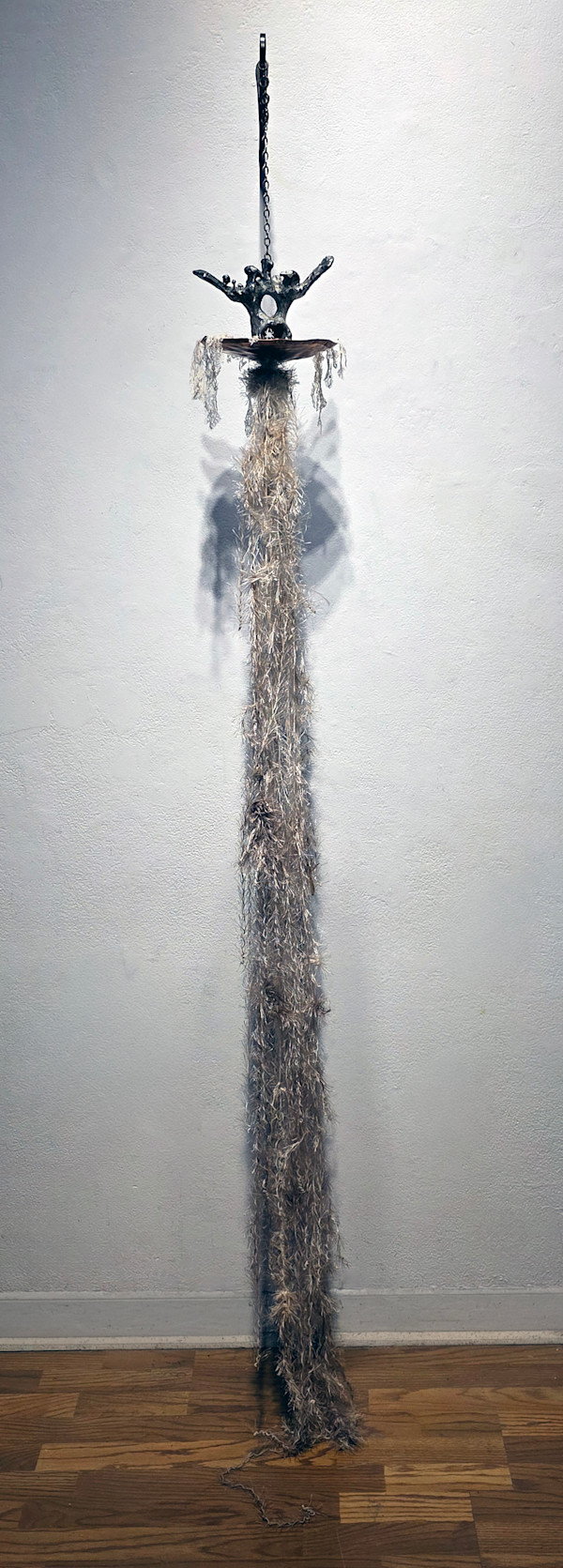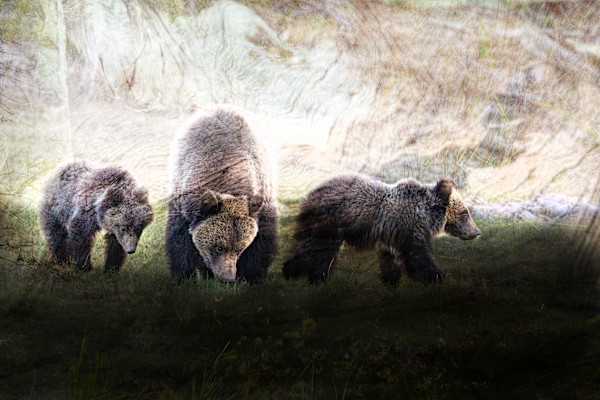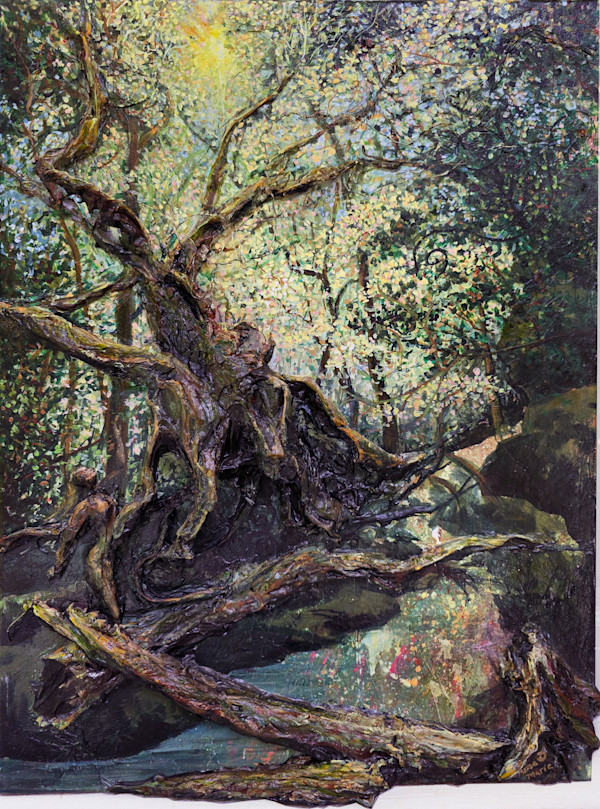
She kneels at the edge of the cosmos, cradling a sphere of light as if it were the first breath of the universe. Around her, galaxies stir—swirled into being by a song too ancient to be heard, yet felt in the marrow. Her hands do not command; they call. They coax. They remember.
In this image, she is the Night Mother in motion—no longer the silent guardian but the singer of stars, the flame-bearer, the breath of the beginning. Her presence evokes the great origin-goddesses:
Nyx, veiled in darkness and birthing gods from shadow.
Nut, whose star-strewn body bridges sky and earth.
Selene, drawing down the moon’s fire.
The Black Madonna, keeper of light in the underworld.
She may be all of them—or none. She may be the first ancestor, the creator mother who sang the sky awake.
She is also the unnamed ones—the ancestral women who whispered stories into flame, shaping worlds from breath.
The lanterns at her feet mark sacred ground—threshold, altar, and offering. The act is not spectacle but sacrament.
She Who Sings the Stars is a creation myth remembered through the body, through ritual, through flame.
It is a hymn cast in light. A silence made into song.
It is the echo of the first sound—the one that turned darkness into dawn.










